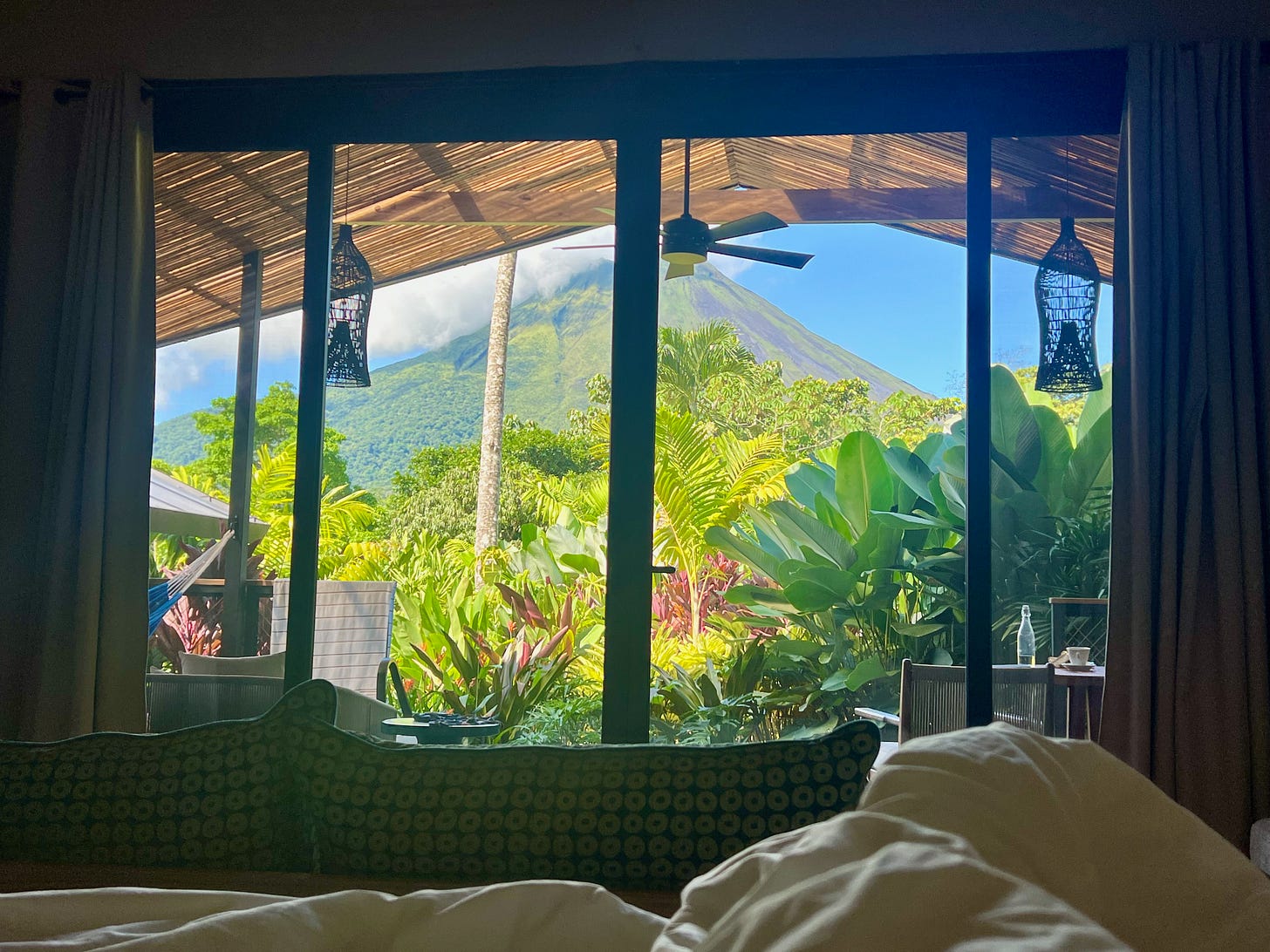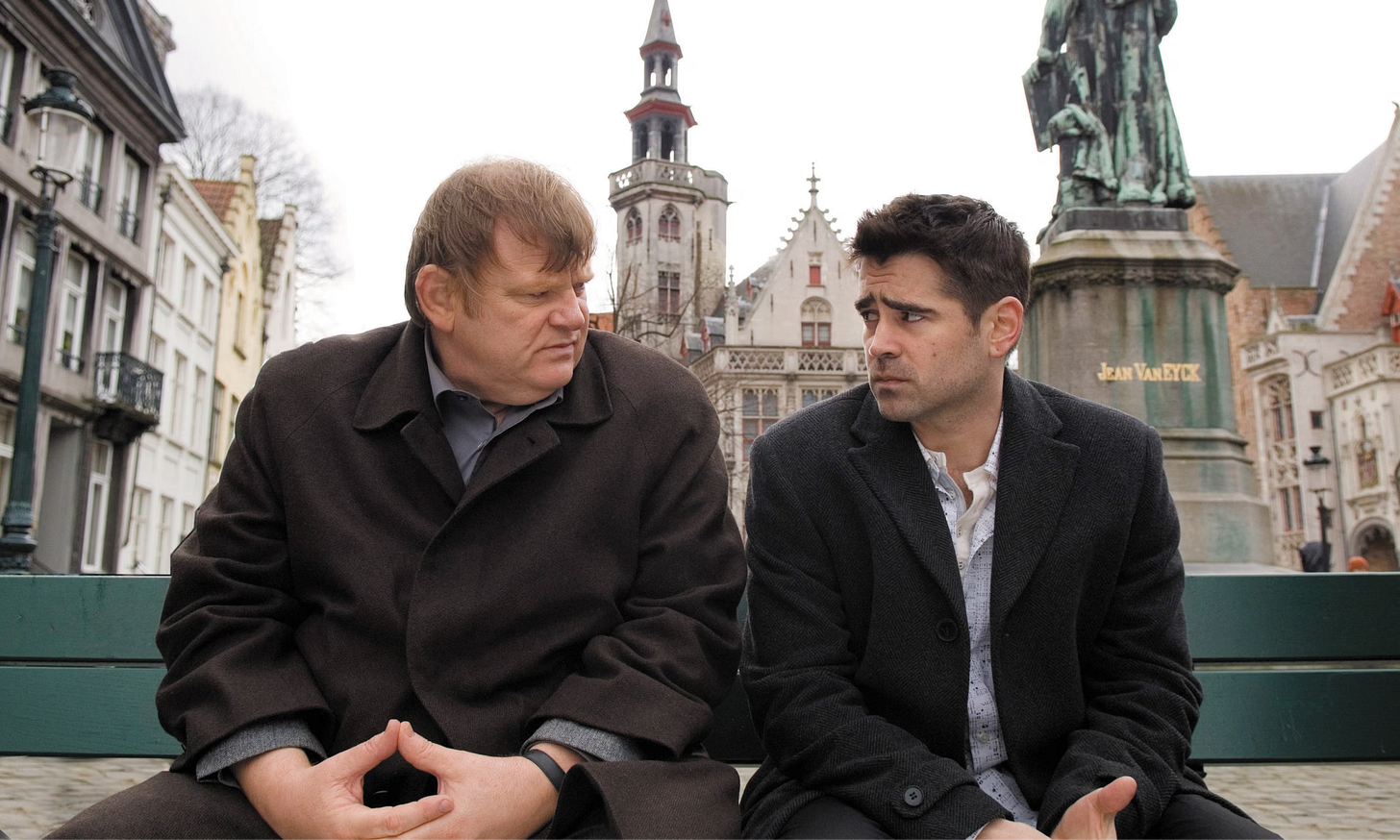14 Rules for Incredible Experiences Traveling Longer
Here are my rules for seeing the world before you retire.
Where would you go if you could anywhere?
For me, life changing wealth is having geographic freedom. I will not wait to travel for retirement. I think that’s too late. Good health in retirement isn’t guaranteed.
I’ll be writing here periodically on how to use your growing financial freedom to get the most out of life in smart, cost-effective ways. Meanwhile, I’ll continue to share strategies for growing your wealth and preparing for an off-ramp to the 9-5.
Today, I want to share how I travel for months at a time and what I’ve learned doing it.
The Dolphin and the Whale: Why bother with extended travel?
A vacation is about fun, relaxing, and recharging. Extended travel gives you more time to reach remote places, try on new daily routines, and let spontaneous things happen.
If a ten-day vacation is a dolphin: playful, social, full of quick bursts of fun; then a sabbatical is a whale: vast, migratory, unhurried, with moments of wonder like a sudden jump out of the water.
I’m still on a high after finishing a 9-week sabbatical this year. As a working adult, I’ve now done stays of 2+ weeks in London (3 times), France (3 times), NYC (twice), Italy, Costa Rica, and the Faroe Islands. I often string multiple extended stays into trips of 6 weeks or more. In my younger years, I spent 7 months living out of a car and circling the Australian continent, among other adventures.
After much trial and error and learning from other master travelers, I’ve accumulated these rules and tips that I now follow to make the most of my experience when I’m overseas for extended periods.
I’m sharing these here because they’ve worked for me. Try out the ones that make sense to you and share your own in the comment.
My Rules for Extended Travel
1. Start with something extraordinary.
The best ones are activities or events that truly feel special to you and follow things you're passionate about. This will be the anchor of your trip, and everything else gets planned around it.
There are so many incredible possibilities, and that’s what makes travel truly special. In my recent sabbatical, I planned it around a Safari in Southern Africa. But what excites you? Doing a hut hike in Switzerland? A yacht trip around the Mediterranean? Trekking to Machu Picchu?
2. Think about destinations in weeks, not days.
When you are somewhere for a week or more, you will run out of things to see and do within a few days. That’s great! That’s when you slow down and start doing what the locals do with their free time. Many of the most interesting and serendipitous experiences happen when you aren’t rushing.
3. The longer you are gone, the more you need a living room
When you slow travel, there will be days you just chill inside all day and read or binge-watch something. This is much less appealing in a hotel than in a real home, where you can spread out and relax. Airbnb is a good option, but also check out home swapping sites like HomeExchange.com1.
4. It’s okay to do a lot and go everywhere, but recognize the signs of over planning.
After choosing the primary anchor destination, it’s ok to squeeze in as many other things as you feel excited about. But that inevitably leads to complicated itineraries. I’ve found that, after I do this, there’s usually a moment when I feel in the pit of my stomach that something’s off. I’ve learned to recognize that as my flag for having overplanned. If you are feeling just a little bit uneasy about your trip, try cutting out one destination from the itinerary. It usually fixes that worry.
5. Go to the most remote location first.
This is advice I learned from Kevin Kelly, Founder of Wired magazine: “On vacation, go to the most remote place on your itinerary first by passing the cities and then return to the big city at the end. You’ll maximize the shock of otherness in the remote, and then later you’ll welcome the familiar conveniences of a busy city on the way back.”2
I take this a step further, and I love to add a luxury experience to the end of a long trip. End with getting pampered and with something memorable. During my sabbatical, I ended with a splurge at a three-star restaurant in Copenhagen.

6. The more you move, the less you should pack.
The more places you tack on, the more you will have to lug your luggage around. The 80/20 rule of packing is to minimize coats and shoes. Those are what take the most space. I follow the “Always, Sometimes, Never” rule for packing coats and shoes. Always bring one, sometimes bring two (such as when traveling to multiple climates), and never bring three or more. A puffy jacket is almost always the best choice for a coat when traveling. It provides the most warmth in the least amount of space.
7. Invite friends. But keep the time together tight.
Time with good friends can create the highest highs of a trip. But less is more. Pick one tightly defined period to spend together, and then build it into the plan that each couple or family will go their own way afterward. This keeps the energy high, lets everyone recharge their batteries without getting on each other's nerves.
8. Read books & watch stuff set in where you are going.
It helps you build context to orient yourself to new experiences better. And it simply gets you excited about going! Fiction is particularly good at giving a glimpse into some of the intangibles of the culture and habits that are hard to learn from a Wikipedia page (but read those too!).
Watching In Bruges before heading to Belgium made the trip hilarious - nothing like quoting depressed mobsters while walking through one of the cutest towns on earth. And a Sherlock Holmes story or two always gets me in the mood for London’s foggy streets.
9. When you have nothing to do, follow The Interesting Turn Rule.
The Interesting Turn Rule is the invention of my wife and me after countless days wandering new cities. It works like this:
Step 1.) Just start walking. Literally anywhere you are.
Step 2.) Every time you reach an intersection, look in all directions and turn to walk in the direction that looks most interesting.
Step 3.) Repeat.
You will inevitably bump into cool things that aren’t in the guidebooks. Interesting neighborhoods, awesome bars, unusual exhibitions, and all kinds of things you would never think of. Stop and visit whatever strikes you!
Ps. This makes for a fun day in your home city, too. I often do this in San Francisco in parts of the city I’m less familiar with.
10. Travel deeply in places you like & revisit.
The well-traveled Tyler Cowen put it well: “Get to know some of your favorite places truly in depth, most of all major cities that are easy to reach and often are connected to free or paid invitations. For me, that would imply more trips to London, Paris, Tokyo, Berlin — you get the picture. Under this view, the returns to variety are diminishing. And have I ever regretted stopping in on those places?”3
It’s especially fun to go back and find that amazing gelato place in Rome you've been thinking about, or your favorite Kebab in Berlin, or that adorable wine bar in Paris. You get to relive your favorites while building new memories and experiencing things you missed the last time.
Rules that save you money
A big life doesn’t have to be extravagantly expensive. There are ways to save more that make the travel better. The following rules do both.
11. Human-powered transportation is the most fun.
Bike, walk, paddle, and ski between places as much as possible. This is more doable than you might imagine, especially in denser, public transit-friendly places like Europe and Japan.
I am a big fan of the bike rental kiosks that are now in many cities as a way to do your own tour. In an afternoon on a bike, you easily see most of the major sights of, say, Paris. Maybe it’s just me, but biking is the perfect pace for experiencing a new place. You can cover a lot more ground than walking, but don’t fly by things like you do in a car.
12. Good weather is overrated.
Shoulder seasons are great for a lot of reasons. There are way fewer tourists, fewer holiday closures, and often more local events. Fewer tourists also means cheaper accommodation.
This is especially true for big cities which are fun year-around.
13. Don’t worry about being in the trendiest neighborhoods.
Of all of the people I’ve met from London, none live in Covent Garden or Soho. So forget Soho and stay where the normal people live. It’ll be cheaper, you’ll get a better feel for what the place is like, and it will be much more memorable. I often let serendipity choose my location by going wherever I can find a home exchange or a cool Airbnb. That’s led to interesting and unexpected neighborhoods.
14. Take advantage of other food options beyond restaurants.
After being away from home for long periods, it becomes expensive and heavy to eat out three times a day. Delis and butchers in many countries are great options to fill in for restaurants when you don’t want to cook. In France, they have “traiteurs” who sell already prepared meals that are more like home cooking and generally high quality. You can buy salads, lasagna, paella, and roasts that require minimal reheating.
I hope you found some of these rules valuable. I expect that my list will continue to grow and evolve as I get to try them out in new places. I can’t wait.
I’d love to keep learning from you all about your rules, tips, and tricks for maximizing the benefits of your travel experiences. Please share yours in the comments and enjoy the adventure!
Appendix - How do you find the time & money to travel?
The two big reasons that hold us back from traveling, particularly long-term traveling: time and money. Here’s how you can manage them.
Obstacle A: Time
How do I get away for weeks or months at a time?
There are more and more ways to make long-term travel a reality today, thanks to the rise of remote work and a shifting culture around work-life balance.
You don’t even need to be fully remote. Many companies now have policies that allow employees to work remotely for a certain number of weeks. If you combine 2 weeks of vacation with 3 weeks of remote work, for example, that opens a lot of travel options.
Sabbaticals and career breaks are becoming increasingly common. LinkedIn now has a feature to show career breaks in your work history. I’ve met families that have moved with their kids to attend school in Japan for a year. Couples who have taken a 1-year round-the-world honeymoon. And families doing worldschooling.
Even without sabbaticals or remote work options, it’s still possible if you’re willing to work at it and go against the cultural grain.
In the 1990s, long before remote work, my mom took off for six weeks at a time to take the family on RV adventures. We drove from California to New York. From California to Florida. We followed the whole Oregon Trail once.
It wasn’t simple for my mom to step away from work. She had to negotiate with her boss to make it happen, but she was a top performer, she hit her deadlines, and was willing to take time off unpaid when needed. It’s possible if you’re willing to work for it.
Obstacle B: Money
Surprisingly, long-term travel doesn’t have to be more expensive than a vacation. I have been in France and Italy for a month and spent less than I spend on average living at home in the Bay Area. Even factoring in everything I spent that month, including mortgage, utilities, and expenses back home. I accomplished that by using Rules 11-14 above. They help you reduce costs while also making the experience better.
Lastly, if Travel is important to you, use mental accounting to your advantage. Save for it in a dedicated space. More on that here.
We’re big fans of HomeExchange.com. It takes your biggest travel expense, accommodation, and makes it complete while letting you stay in bigger and nicer homes! If you are interested, we appreciate it if you sign up here at our referral link.
From Kevin Kelly’s book Excellent Advice for Living: Wisdom I Wish I'd Known Earlier. See also: https://kk.org/thetechnium/50-years-of-travel-tips/?utm_source=chatgpt.com
https://marginalrevolution.com/marginalrevolution/2023/03/travel-philosophies-for-the-well-traveled.html?utm_source=chatgpt.com






Love these tips and they remind me of my favorite two:
1. find green on the map and start walking—local parks often have cafes near by or just a nice peaceful area after seeing a touristy spot
2. Go to the movies or grocery store—do the thing you would do at home. Normal things in new places are a great way to make a memory